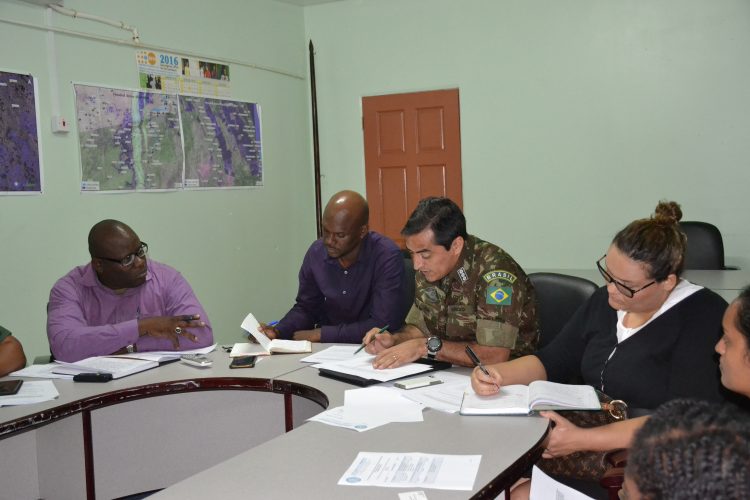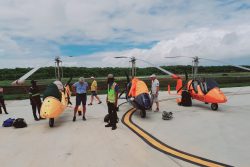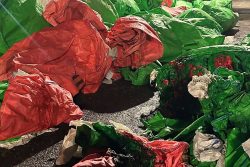Drilling of water wells in eight Rupununi villages under a Guyana-Brazil initiative is set to begin in October.
During the drilling phase, the Brazilian Army will be working closely with the Guyana Defence Force and this collaboration will see the drilling of artesian wells in the villages of Aishalton, Chukrikednau, Shea, Maruranawa, Awarawaunau, Karaudarnau, Achiwib and Bashraidrun.
A Ministry of the Presidency release on Tuesday said that the Government of Guyana, in collaboration with the Government of Brazil, will on March 19-29, 2018, conduct reconnaissance work in Upper Takutu-Upper which will pave the way for the drilling of the eight wells. This will assist in the storage of water for the dry season (El Nino). The drilling of the wells is expected to commence in October and will last for 60 days.
The first working group meeting was held on Tuesday morning at the boardroom of the Civil Defence Commission (CDC) with the Brazilian Military Attaché to Guyana, Colonel Deni Da Silva, Acting Director General of the organisation, Lieutenant Colonel Kester Craig and stakeholders from the Ministries of Communities, Public Health, Foreign Affairs and Agriculture as well the Guyana Defence Force (GDF), the Guyana Lands and Surveys Commission (GLSC) and Guyana Water Incorporated (GWI).
Colonel Craig said “As we know, Rupununi is susceptible to droughts and floods so we want to remove that uncertainty and have a system under which the communities could be supplied with fresh water continuously during the year. Mainly, in Region Nine, the residents use hand dug wells and you find that a couple weeks into the dry season, there is no water for them to use. Those wells are usually about 20 metres but these that will be dug later in the year will be 100 metres, which translates to about 300 feet. It is all part of us responding to the drought situation during the dry season in the region,” he said.

On completion of the wells, Craig said that the Commission will undertake the task of monitoring and evaluating the project to determine how it has impacted the communities.
This project follows President David Granger’s State visit to Brazil in December 2017, where the Complementary Agreement to the Basic Agreement on Technical Cooperation between the two governments for the Implementation of the Project Technologies to Reduce the Effects of the Drought in Region Nine of Guyana, was signed.
The Complementary Agreement states that the Government of Brazil shall undertake to “promote the transfer of Brazilian knowledge and experience related to mitigation of the effects of drought; provide the means for implementation of activities foreseen in the Project, send consultants and experts to implement activities to be carried out in Guyana, support the development of the Guyanese technical team’s capacity to drill artesian wells and monitor and evaluate Project implementation.”
The Government of Guyana, as prescribed in the Agreement, shall undertake to “take responsibility for the maintenance of the artesian wells that will be drilled during the practical operations on the ground; appoint a technical team to monitor and participate in activities to be implemented, provide the technical team sent by the Government of Federative Republic of Brazil with the logistical support required to implement activities of their responsibility and to take measures to ensure that activities implemented by professionals sent by the Brazilian Government will be continued by professionals from the Guyanese implementing institution.”
In 2016, the Brazilian Army helped to drill wells in the south Rupununi during severe dry weather in that year.
In February this year, a 4.5 million cubic metres water reservoir at Nappi in the Rupununi was handed over to Region Nine and is expected to relieve drought conditions. The water reservoir, according to the Department of Public Information (DPI), was completed in 2017. It was done as a partnership between the government and Conservation International (CI). The reservoir was engineered and designed by JR Ranch Incorporated and is buttressed by a 450-metre dam, DPI said.









